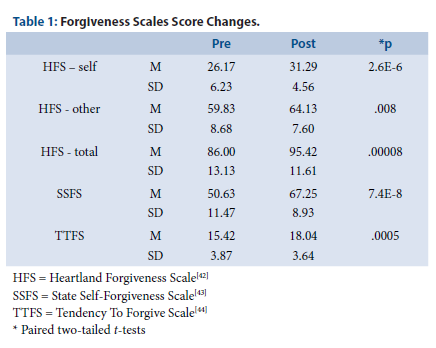Heart Rate Variability During an Internal Family Systems Approach to Self-Forgiveness
Abstract
Background and Aim: Self-recrimination is a stress-inducing cognitive process, so there is a strong need for evidence-based effective self-forgiveness interventions. Most individuals, and particularly those in professions with high occupational stress, can suffer damaging bouts of self-recrimination, leading to depression, burnout and/or suicide. Unfortunately, useful frameworks for developing self-forgiveness skills appear limited. Methods: We designed a guided imagery session, based on the internal family systems therapeutic model, to facilitate the process of self-forgiveness. We used surveys and ECG recordings to 1) determine the effectiveness of the self-forgiveness imagery, 2) collect baseline psychometric data on forgiveness, particularly self-forgiveness, 3) collect ECG data during baseline, self-critical rumination and self-forgiveness periods and 4) correlate the psychometric and physiological data. Results: Together, our outcomes indicate the intervention is highly effective and that the self-forgiveness state produces high parasympathetic tone. Conclusion: A single, relatively short guided imagery session can facilitate significant self-forgiveness which is associated with reduced physiological stress.

Copyright (c) 2020 Phcog.Net

This work is licensed under a Creative Commons Attribution-NonCommercial-NoDerivatives 4.0 International License.





